Photographic Explorations of Butoh Essence
Adam Lach Lunaris: Luna-Graphy
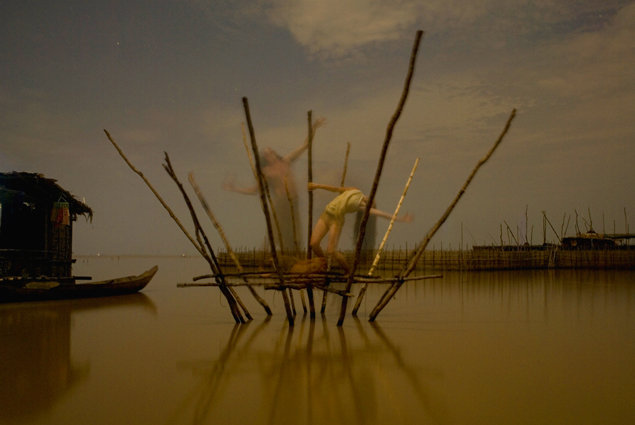
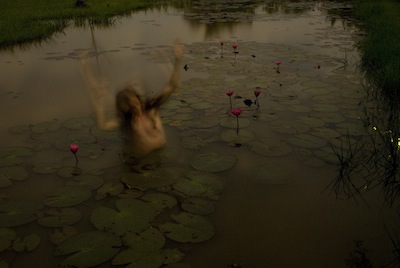
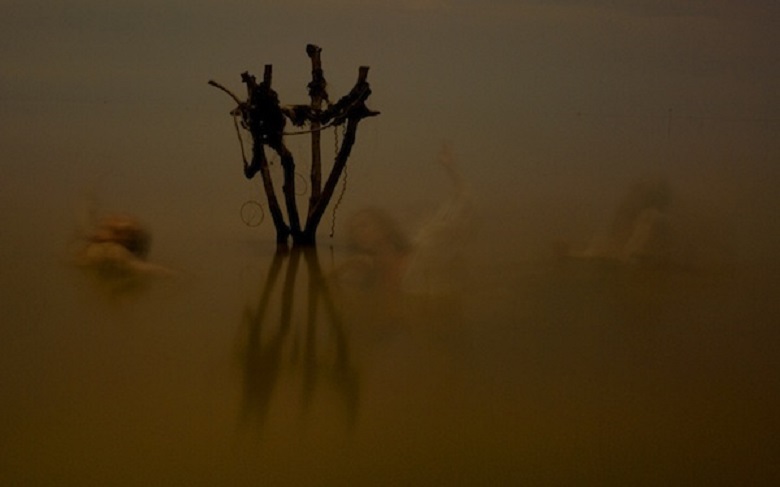
Jean Daniel Fricker and Celine Angele in Cambodia © Adam Lach Lunaris.
You’ve spoken about your experiences of photographing Butoh dancers traveling in Cambodia. In what is perhaps a more extreme situation of dance photography (minimal communication during the shoot, the intensity of the dance style itself, and the remote, unfamiliar location), how did you find you connected with the dance on an emotional level?
Luna-graphy has a certain feature, like a kind of language, which I named “30 second’s exposure”. It is simply the way the camera is writing an image in given light conditions. Movements are saved and transformed into an image depending on the colors of the background and the person moving–white clothes or the naked body give different effects than a dancer dressed in, for example, black.
Even dance dynamic plays a major role here. When you have a concept of the final image, you have to know how to move, behave and act in order to get there. This is something I have to present and explain (teach) people in front of my camera. So with Jean Daniel [Fricker] and Celine [Angele], we definitely cooperate on the higher level of emotions. These are very subtle things and they require an unspoken connection, a kind of deeper understanding, which allows for the perfect image to be created.
You mention that luna-graphy is a method for you to capture the subconscious or maybe a higher consciousness. How has your technique allowed you to experience that, especially in the case of photographing Butoh dancers?
Please stop yourself for 30 seconds. You will realise that many things are going on inside you. Now imagine you are in front of the camera… I feel that luna-graphy conveys the spirit even though on the image, you see the body of a person. This impression is shared by most of the people who view my work. That is how luna-graphy allows me to connect with people on a higher level.
What do you feel is the connection between luna-graphy and the philosophy of Butoh?
When the full moon started, I introduced [the Butoh dancers] to the concept of luna-graphy. Once we started, we soon realized that Butoh philosophy, with its concept of discovering your inner self during the performance and crossing your inner boundaries, is in perfect harmony with luna-graphy’s long exposure. They work together perfectly, allowing a creation of a unique document captured in one image. A single luna-graphy image is a kind of short movie closed in one photographic image.
That is why I don’t think I have simply photographed Butoh. Some could probably call it this way, but personally I feel I was creating luna-graphs portraying dance, movement and performance of Jean Daniel and his group. Jean Daniel himself said that these moon images were something new, something very individual and not yet fully defined. In his opinion, only a few images were purely portraying Butoh.
Patrick Rochon: Light-Painting
Sal Vanila © Patrick Rochon.
You introduce light painting as a reflection of phenomenon where bodies very naturally emit traces of light. You say, “Light painting is an expression of our true selves.” What does mean, both in terms of technical phenomenon and also in terms of your personal expression of it?
If you look at the work of Konstantine G. Korotkov; if you look at the work from the German research groups of the IIB (Neuss, Germany); and also if you look at the Japanese scientist who employed extraordinary sensitive camera capable of detecting single photons emitted by the human body, you will soon understand that we are energy and we emit light. Somehow I’ve known this for over half my life and with all the information accessible now on the web, and the science that is quickly moving forward, it became clear that the message behind painting with light is clear and connected. We are light beings, and this light must be revealed and understood. That is why I express it with my art.
How do you view Butoh as distinct and unique from all other forms of dance, in spirit and also as a photographic subject?
I think in Butoh, they go deep into the spirit of things and situations. They as people don’t exist anymore; only the spirit they embody exists. Also the chemistry they have between them is like birds as a flock: all sync together perfectly.
What do you feel, in general, is the connection between dance and the desire to photograph it?
… I think [photography is] to capture a moment in time the eyes can’t see from a live performance. Capturing just a fraction of the dance and pulling it out of its context to deepen the detail of this moment. In light painting, it is to enhance the energy of the moment.
Abe Frajndlich: Minami Azu & Butoh Muse
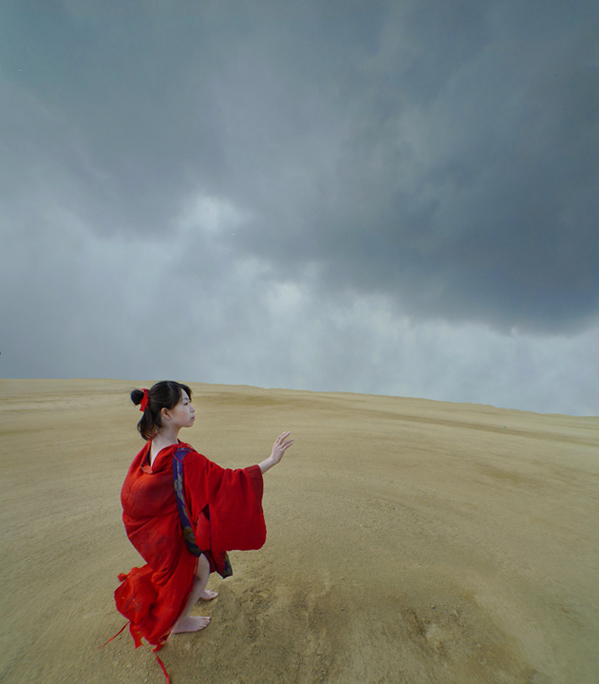
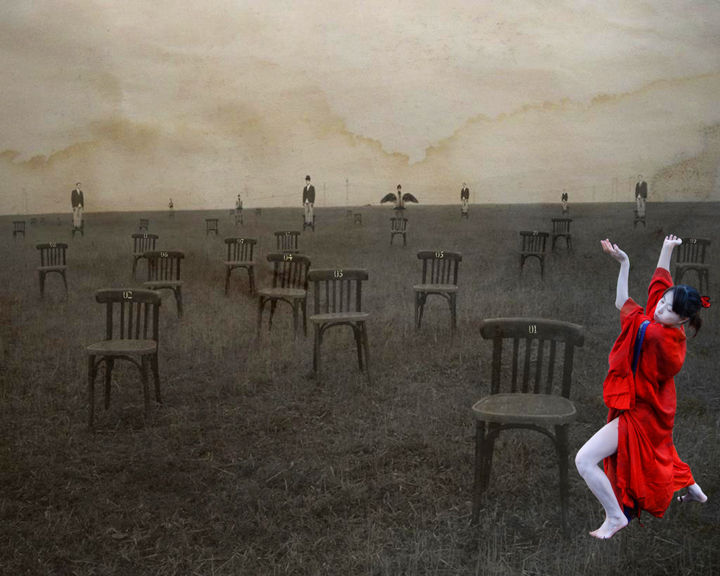
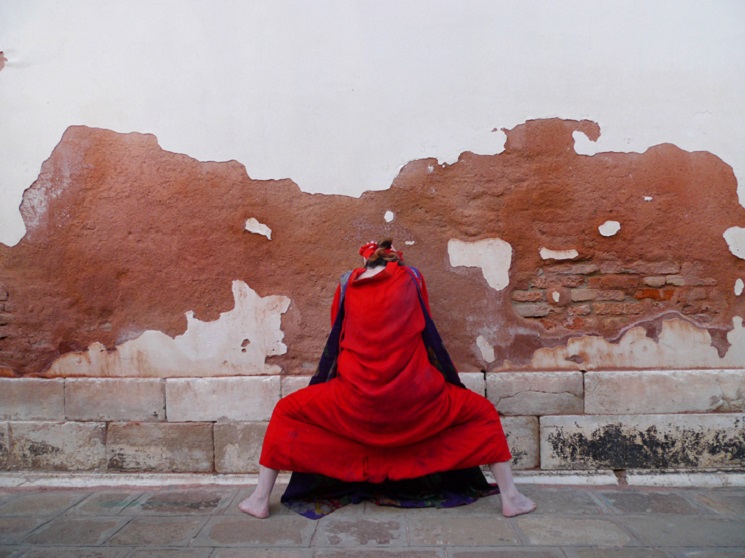
Kyoto, 2013 (left), Kyoto, 2013 (right), Venice, 2011 (bottom) © Abe Frajndlich
How did you first come to discover Butoh dance? What drew you to this art form as an artistic subject?
My first encounter with Butoh was through the work of Eikoh Hosoe, the great Japanese photographer who did a book called Kamaitachi, in the late sixties. When I arrived at Minor White’s home in 1970, both Kamaitachi and another book called Barakei, or Killed by Roses, were in Minor’s library. Something must have been sparked deep within me from seeing and living with those works, and experiencing the amazing collaboration between Hosoe and the Butoh dancer Tatsumi Hijikata, as well as his images of the novelist Yukio Mishima.
Could there be any geographic locations, environments, or types of ambiance that resemble in their colours and feelings the spirit of Butoh?
I confess, that the more I have pondered “the spirit of Butoh” the further I have gotten from its essence. But I must also confess, that from the first time I saw Minami performing on the platform of the subway station in Union Square, I knew that she partook of the real thing, and was highly evolved in her Zen practice, which is so intrinsic to Butoh practice.
As a photographer, and especially in your experience with Minami, you’ve had the opportunity to observe Butoh with greater attention to detail than someone in an audience might. Just from what you have seen, how do you feel Butoh communicates elements of the subconscious or the spiritual?
I think every photographer will bring his innate understanding to what is in front of him to the problem. The images you saw in Butoh Muse, 2muse, and Figments are edited from hundreds, possibly thousands of images, and most of the time the “spirit” is missed, but occasionally one gets lucky, and possibly captures some trace of it. It must be made clear that Minami is a dancer, and I am a photographer. I am not making a film of her performance, but taking her into other environments past the stage that she usually performs on, to hopefully heighten the content of what she does in dance and I do in photography, but having the intersection be beyond what each of us is doing. When it works, that is.

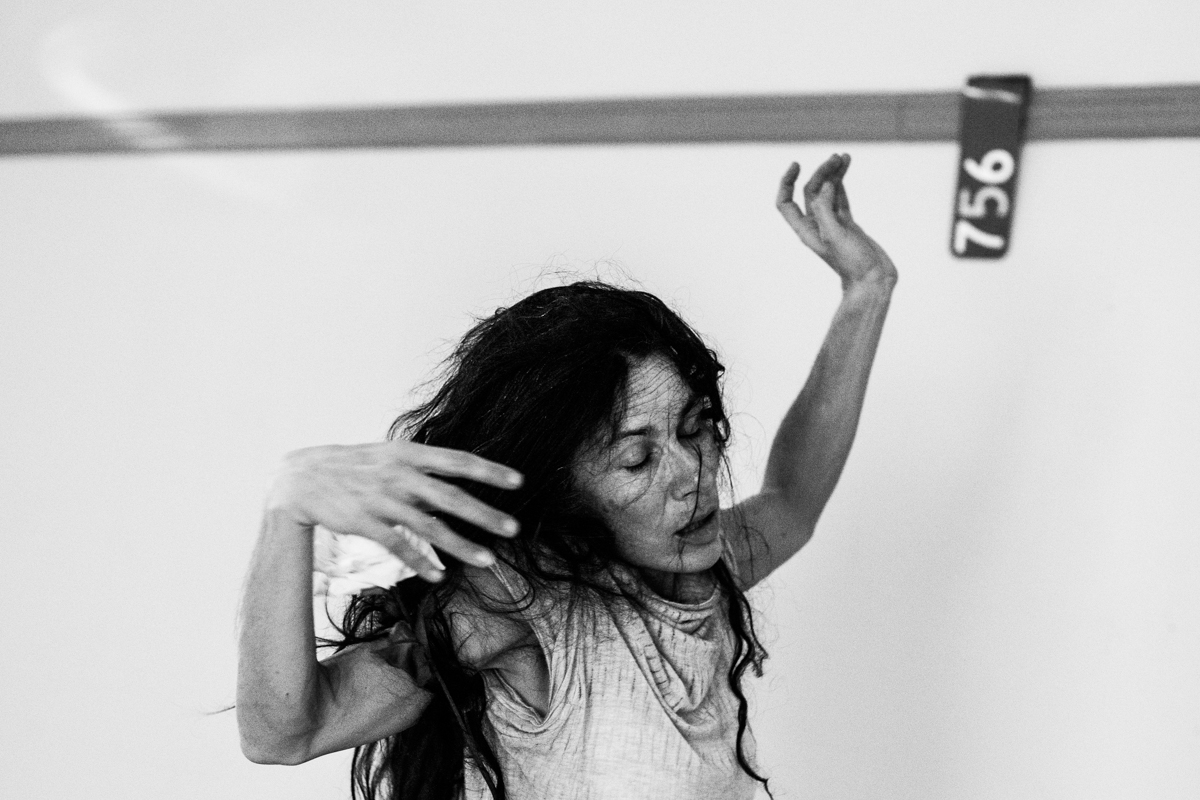
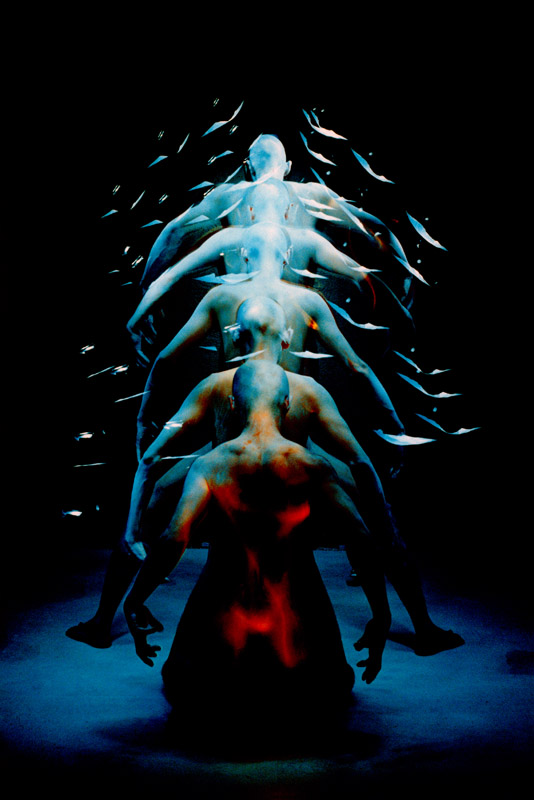
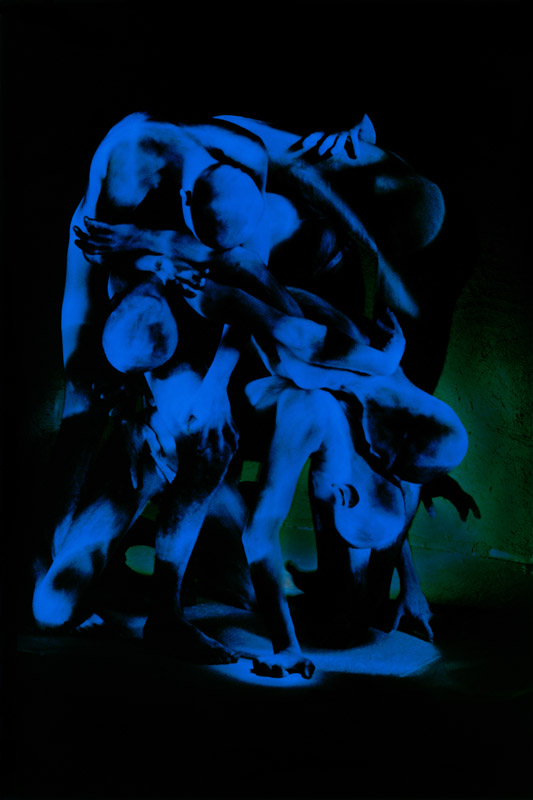






[…] Butoh Dancing (舞踏): Discovering Emptiness, Embodiment & Environment in an Archeology of Body: http://www.redefinemag.com/2013/international-butoh-dancing-emptiness-embodiment-environment-archeol… […]
Hi Yan, Thank you so much for your kind words 🙂 Glad you enjoyed the article!
Even if I was not honored to be interviewed by you in this article, I would still be very impressed with your research and perspective Lital. Thank you for your careful and thorough attention to this important art of our times. Hopefully it will inspire people to attend a performance or workshop themselves as that is really the definitive way for this art to be experienced — directly through the body in real time + space.
[…] ARTICLE: BUTOH DANCING (舞踏): DISCOVERING EMPTINESS, EMBODIMENT & ENVIRONMENT IN AN ARCHAEOLOGY OF BOD… // Redefine […]
[…] Discovering Emptiness, Embodiment & Environment in an Archeology of Body’. Available at: http://www.redefinemag.com/2013/international-butoh-dancing-emptiness-embodiment-environment-archeol… (Accessed: 12 June […]